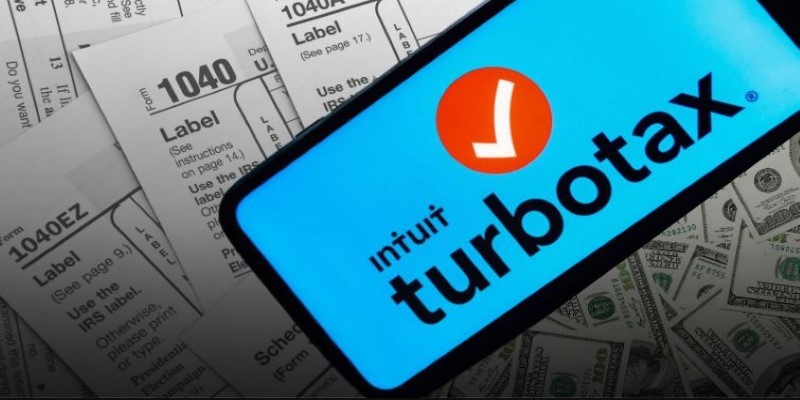Is TurboTax Still Free? Why Filing Taxes in 2025 Feels Trickier Than Ever
Advertisement
Filing taxes can be stressful, and many people look for free options to avoid extra costs. TurboTax has long been a popular choice, offering a “Free File” option. But this year, things are more complicated. Some users are discovering that what they thought was free now comes with unexpected fees. The rules have changed, and understanding whether you qualify for truly free filing with TurboTax is more important than ever.
TurboTax sells free tax filing, but not everyone is eligible. The IRS Free File Program has income limits, and TurboTax's own "Free Edition" only includes basic returns. If you have deductions, credits, or self-employment income, you'll probably need to pay for the upgrade. Many who filed for free last year will be surprised by restrictions and fees in 2025.
Who can actually file for free with TurboTax?
Not everyone qualifies for the free version, and that is where things get a little complicated. The IRS Free File Program offers eligible filers the chance to use tax software at no cost, but that is only if they have earned below a certain income threshold—for 2025, it's $79,000. TurboTax was part of the IRS-backed program at one time but left it in 2021. Now, it offers its own "Free Edition," which sounds very similar but is not the same thing.
TurboTax's Free Edition only handles straightforward tax scenarios. This means you qualify if you're filing only W-2 income, taking the standard deduction, and having no big credits or deductions. However, when your return is a bit complex, say with student loan interest, child tax credits, or self-employment income, you might get an upgrade message. The sad part is that many users learn this after having already entered most of their data, which is really frustrating.
Another catch is state tax returns. Even if you qualify for free federal filing, you may have to pay to file your state taxes. Some competitors include state filing in their free versions, but TurboTax usually charges for it, which can be a nasty surprise. If you live in a no-income-tax state, you are lucky. Otherwise, be prepared to pay for the extra feature before submitting your return.
Why It’s More Complicated in 2025?
This year, tax filing feels more confusing because of ongoing changes in tax law and software policies. The IRS has been working on its direct filing system, aiming to make free filing easier for taxpayers. TurboTax, like other major tax software companies, is not thrilled about this competition. Some users report seeing more aggressive upselling within TurboTax's system, pushing them toward paid products even when they might qualify for free filing elsewhere.

Additionally, new tax credits and deductions for 2025 could make more taxpayers ineligible for TurboTax’s Free Edition. If you received expanded student loan relief, took advantage of energy-efficient home improvement credits, or had multiple income sources, you might be forced into a paid TurboTax plan. Even changes in tax brackets could impact who qualifies for free filing, making it essential to double-check your status before assuming you’ll pay nothing.
Another issue is transparency. TurboTax’s website heavily promotes free filing, but the details about eligibility are often buried in fine print. Many users don’t realize they don’t qualify until they’ve invested time entering their information. At that point, some feel pressured to pay just to finish their return rather than start over with another provider.
How TurboTax Encourages Paid Upgrades?
TurboTax’s upselling tactics have become a major complaint among users. While the Free Edition might seem accessible, many taxpayers find themselves locked into a paid version as they progress through the filing process. The software automatically scans your return and suggests upgrades based on your income, deductions, or tax credits.
For example, suppose you have a freelance side gig. In that case, TurboTax might recommend upgrading to the "Self-Employed" version, even if you only made a small amount of extra income. Similarly, claiming education credits, mortgage interest, or investment income can push users into paid plans. The process is designed to make upgrading feel seamless, with TurboTax presenting it as the best option for maximizing your refund.
Many users feel frustrated by this system, as they don’t realize they’ll be charged until they’re nearly done with their return. At that point, restarting with another platform feels like too much hassle, and they end up paying even if they initially intended to file for free.
Are There Better Free Filing Options?
If you don’t qualify for TurboTax’s free option, you might still have alternatives. The IRS Free File Program partners with other tax software companies that offer genuinely free tax filing to eligible users. While TurboTax no longer participates, providers like FreeTaxUSA and TaxSlayer continue to offer free versions that include more complex returns than TurboTax’s Free Edition.

Additionally, some states provide free filing options directly through their tax agencies. If you qualify, these programs can help you avoid fees without navigating TurboTax’s upselling tactics. The IRS is also expanding its Direct File pilot program, which could eventually offer free tax preparation directly through the government, cutting out the need for third-party software entirely.
For those who don't qualify for IRS Free File but still want to avoid TurboTax's fees, other tax software like Cash App Taxes offers completely free federal and state filing with no hidden upgrades. It's always a good idea to compare multiple platforms before committing to one, especially if you're trying to file taxes for free.
Conclusion
TurboTax remains a popular choice, but its free filing option is more limited than many realize. While simple tax returns may qualify, additional deductions or credits often push users into paid plans. Hidden fees and upselling make it crucial to explore alternatives like the IRS Free File Program or truly free options like Cash App Taxes. With tax laws evolving and new government initiatives emerging, reviewing all options carefully can help you avoid unexpected costs when filing your return.
Advertisement












